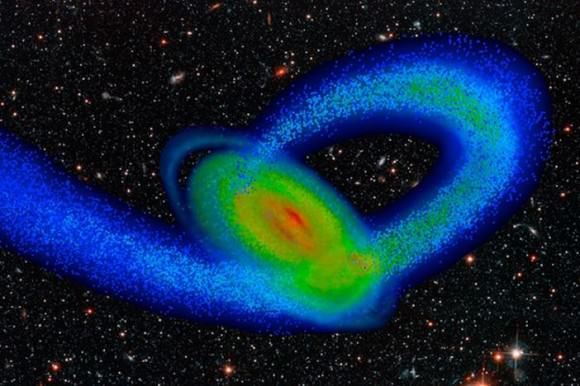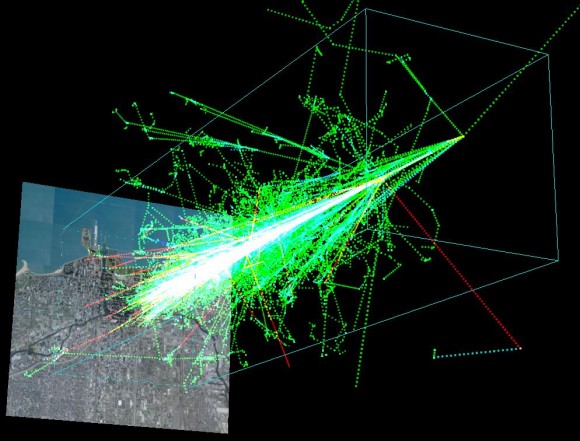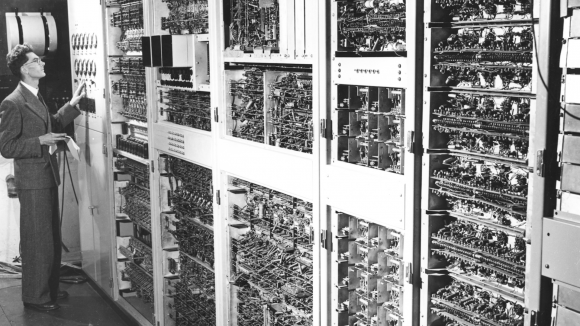Are We Living in a Simulation?
It turns out I’ve got a few things in common with Elon Musk, the founder of SpaceX and Tesla. We’ve both got Canadian passports, we’re absolutely fascinated by space exploration and believe that humanity’s future is in the stars.
Oh, and we’re kind of obsessed at the possibility that we might be living in a computer simulation.
In the recent 2016 Code Conference, Elon Musk casually mentioned his fascination with the concept first put forth by the scientist Nick Bostrom. Apparently, Musk has brought up the argument so many times, he’s banned from discussing it in hot tubs.
I haven’t received any bans yet, but I’m sure that’s coming.
The argument goes like this:
Advanced civilizations (such as our own) will develop faster and faster computers, capable of producing better and better simulations. You know, how the Sims 2 was a little better than the Sims 1? The Sims 3 was sort of crappy and really felt like a money grab, but the Sims 4 was a huge improvement. Well… imagine the Sims, version 20, or 400, or 4 million.

Computer model of the Milky Way and its smaller neighbor, the Sagittarius dwarf galaxy. Image by Tollerud, Purcell and Bullock/UC Irvine
Not only will the simulations get more sophisticated, but the total number of simulations will go up. As computers get faster, they’ll run more and more simulations simultaneously. You’ll get one mediocre simulation, and then a really great simulation, and then thousands of great simulations, and then an almost infinite number of near perfect simulations.
Nick Bostrom calls these ancestor simulations.
Which means that for all the beings living in all the realities, the vast majority of them will be living in a simulation.
According to this argument, and according to Elon Musk, the chance that you or I happen to be living in the actual reality is infinitesimally low.
Is it true then, are we living in a simulation? And if we are, is there any way to tell?
Nick Bostrom’s ancestor simulation argument is actually a little more complex. Either humans will go extinct before they reach the post-human stage. In other words, we’ll wipe ourselves out before we design computers fast enough to run ancestor-simulations.
I’m really hoping this one isn’t true. I’m looking forward to humanity’s long lived future.
Or, posthuman civilizations won’t bother getting around to running ancestor simulations. Like, the artificial superintelligent machines will have more interesting things to do, and won’t consider sparing a few computer cycles to simulate what it might have been like to watch YouTube videos back in 2016.

Again, this doesn’t sound likely to me. I’m sure those computers will be a tiny bit curious about what it was like to watch Jacksepticeye and Markiplier in their glory, before the terrible Five Nights at Freddy’s Theme Park disaster of 2023.
Those were dark days. Animatronics… blue hair… the horror.
At this point, you’re going to fall into one of two camps. Either you’ve thought through the argument and you find it airtight, like me and Elon Musk, or you’re skeptical.
That’s fine, let’s get skeptical.
For starters, you might say, computers can never simulate actual reality. From our current perspective, that true. Our current simulations suck. But, take a look at the simulations from 10 years ago, and you’ll have to agree that today’s simulations suck less than they did in the past. And in the future, they’re going to suck even less; maybe even be downright acceptable.

A simulation of the impact a cosmic ray has on entering the atmosphere (credit: AIRES package/Chicago University)
Scientific simulations are getting much much better. Cosmologists have developed simulations that accurately model the early Universe, starting from about 300,000 years after the Big Bang and then tracking forward for 13.8 billion years until now.
They’ve been able to model the interaction of dark matter, dark energy, the formation of the first stars and the interactions of galaxies at the largest scale. They have been able to tweak the simulation and get roughly the same Universe as we see today.
They provide all the starting material, and then simulate the gravity and hydrodynamics, the chemical properties of all that gas, radiation and magnetic fields.
If you’re interested in this kind of thing, you should check out the Millennium Simulation or the Illustris Project.
These simulations only recreate the Universe at the largest scales, but I’m sure you can imagine a time when they get better and better, capable of simulating planetary formation, and maybe even the beginnings and evolution of life.
If an advanced civilization ran hundreds, thousands or even billions of these simulations, making them more and more advanced, who knows what they might come up with?
Could we know if we’re actually living in a simulation? The answer is maybe. And you might be amazed to know that scientists have worked out a few tests to try and get an answer.
The first thing to consider is that a simulation can never match the processing power of the reality that it’s trying to simulate. For example, if you made your computer simulate another computer, it wouldn’t be quite as fast as the computer is natively.

Things might seem a bit slow. Credit: CSIRO (CC BY 3.0)
A simulation would need to take shortcuts, use compression and other tricks to make it seem like it’s reality. Sort of how a television show uses a facade of a building, or a cosy living room. There’s nothing behind the door but a sound stage.
In theory, it could be possible to detect those tricks from within the simulation. A team of researchers from the University of Washington have proposed that there might be an underlying grid to the Universe, visible in our observations. They’ve proposed that the observed energy limitations of ultra high-energy cosmic rays might reveal the resolution of the simulation.
Of course, if the simulators are super intelligent enough, they’d have thought of that, and fixed the simulation to account for it. Or went back to a previous save file, once the simulatees figured out reality.
They should have insisted on Ironman Mode.
The reality is that there’s no way we can ever know if we’re actually living in a simulation, or we’re the real reality. We just need to live our lives as if we’re real, until better evidence comes along, or our simulations get so good, their inhabitants start questioning their own existence.
As long as you’re not actually in a hot tub with Elon Musk, feel free to argue about whether or not we’re living in a simulation. What strong reasons do you have to believe we are? Why do you think we aren’t? I’d love to hear your insights.
The post Are We Living in a Simulation? appeared first on Universe Today.